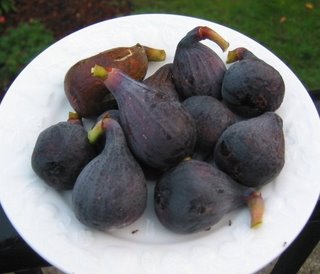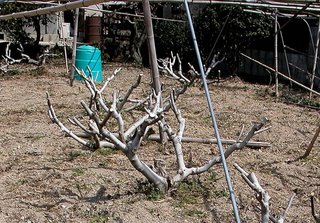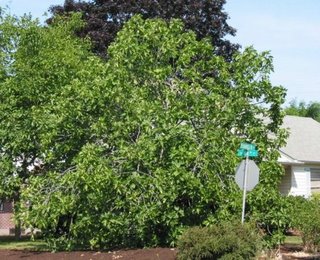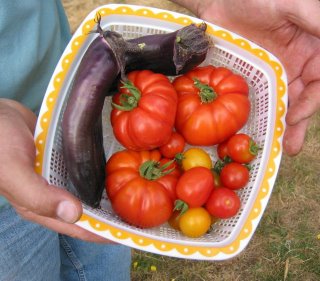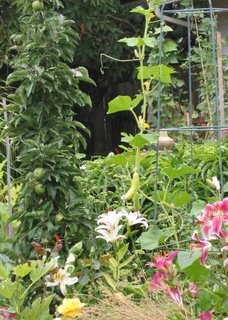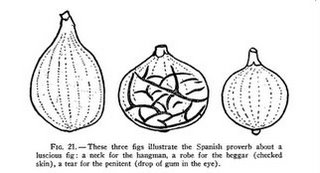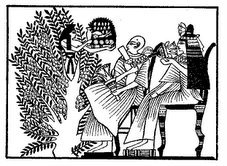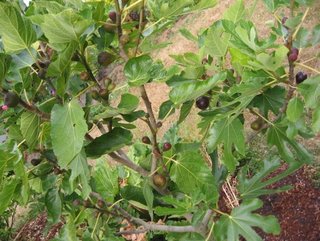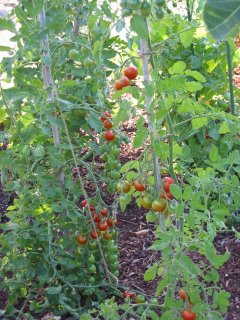
Tomatoes are bearing bowl-fulls daily. Lots of cherries, tart & sweet and juicy and tomatoey.
Gave some Cherokee Purple away. This tomato is amazingly good. People love it so much, it's better to share it & see the response, than to eat it. Almost. Well, not really. But it is very fun to see how people respond to these super delicious tomatoes. I love sharing them. LemonBoy, different flavor, more tropical fruit - but still very juicy and very good. Tomande - wow. But that Cherokee Purple is amazing.
Biked another 22 miles today. Constantly hungry. BP 139/84. On bike days (or rather, nights after bike days), I sleep like the dead. It's great. Very few bikes on the road, but last year it seemed like there would only be one or two per day, now maybe a half dozen.
I finished the breba figs. Vancouver Brunswick had only one breba; Ilet it ripen until there was clearly the beggars robe. This fig was sweet as candy; almost maple sugar. Petite negri had about a dozen brebas; also much better when fully ripe (although each looked like a bird had poked one poke in each fig). Main crop: I counted about 30 on Brown Turkey, about 30 on VB, and about 100 on PN. I'll try not to "count them before they hatch" - oops, already counted. Oh, and Marseilles - one fig. But all I want is to get a taste.

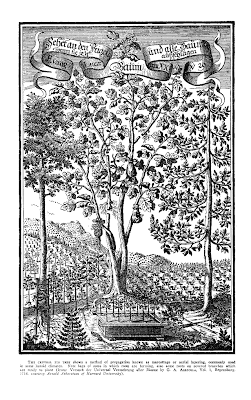 From Condit's monograph. The legend below states "The central fig tree shows a method of propagation known as marcottage or aerial layering, commonly used in some humid climates. Note bags in which roots are forming, also some roots on severed branches which are ready to plant. From Versuch der Universal Vermehrung Aller Baume by G. A. Agricola 1716."
From Condit's monograph. The legend below states "The central fig tree shows a method of propagation known as marcottage or aerial layering, commonly used in some humid climates. Note bags in which roots are forming, also some roots on severed branches which are ready to plant. From Versuch der Universal Vermehrung Aller Baume by G. A. Agricola 1716."